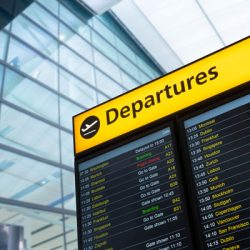Biometrics: A key technology to increase passenger confidence
Project Manager in the Innovation Division of Aena, Pablo Lopez Loeches, discusses how the airport network is developing its use of biometrics.
List view / Grid view


Some of these operations will be focused on securing a seamless passenger experience, others on ensuring security, increasing revenues or reducing environmental impact. Regardless of the aim, these initiatives are integral to the daily operation of an terminal, and in the long term, for the success of the airport.
Whether an airport is an international hub or a small regional airport, the terminal must function efficiently, passengers must be well catered for and staff must be happy. A negative terminal experience could be detrimental to the airport, and so operations must be optimised and new methods considered. These include new technologies, data-sharing between stakeholders, collaboration, airport management systems, and much more.
Gatwick Airport previously said terminal operations was “the heartbeat of the airport”. This section of the website will provide you with information that you can use to ensure your airport keeps beating.
Project Manager in the Innovation Division of Aena, Pablo Lopez Loeches, discusses how the airport network is developing its use of biometrics.
ACI Europe's commitments and recommendations focus on the safe resumption of European aviation as COVID-19 travel restrictions begin to ease.
The opening of the new arrivals and departures hall is the most significant milestone to date in the redevelopment of LaGuardia Airport.
Tovah LaDier, Executive Director of the International Biometrics + Identity Association, provides a brief history of biometrics and aviation from 2001 to the present, with a focus on an ongoing policy debate over the decision to use facial recognition in Entry-Exit.
Based on scientific advice and industry collaboration, the new guidance aims to encourage the quick resumption of the UK aviation industry as soon as it is deemed safe to do so.
In the latest instalment of International Airport Review's exclusive CEO series, Dr. Constantin von Alvensleben, Chief Executive Officer of Tirana International Airport, offers a positive perspective on the current crisis with a strong belief that aviation can recover and prosper.
The new terminal and conference centre at Vilnius Airport aims to offer passengers a sophisticated airport experience with improved quality and convenience.
The Harvey Milk Terminal 1 at San Francisco Airport has become the first airport terminal in the world to achieve a Fitwel certification.
As airports across the region implement ICAO COVID-19 recommendations, ACI Asia-Pacific has reported that the industry is ready to resume operations.
Charles de Gaulle Airport is among 10 other aviation stakeholders to join EASA's programme to assess the effectiveness of its COVID-19 safety measures.
By opening the centre, Brussels Airport intends to set the standard on a European level for providing the best level of comfort for animal passengers.
As it sets to re-open its North Terminal, Gatwick Airport has introduced a range of new safety measures in order to protect the health of its passengers and limit the spread of COVID-19.
Many passengers face differing challenges when navigating an airport; requiring a multitude of solutions and discussions to ensure the airport environment is an accessible one.
By introducing the new autonomous system, Haneda Airport will improve the experience for PRMs and help to limit the spread of COVID-19.
Despite the International Air Transport Association (IATA) warning that passenger demand will not fully recover until 2024, flight data consolidator OAG is reporting green shoots of recovery.